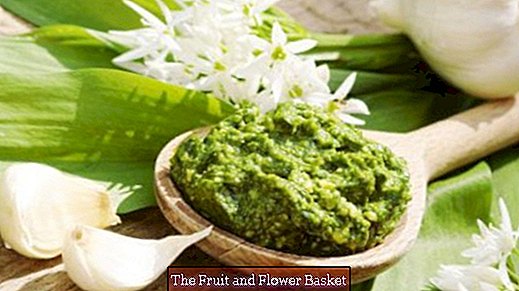Collect and use wild garlic
If one suddenly perceives the smell of garlic while walking in the woods, one has come across wild garlic. Here it is worthwhile taking a break and collecting some of the delicious wild garlic. But there are a few things to keep in mind when collecting wild garlic.
Find out all about one of the most popular wild herbs in our regions now.
The wild garlic
Also known as forest garlic or wild garlic, wild garlic belongs to the bulb family. It is closely related to garlic, onions and chives. His Latin name? Allium Ursinum? says a lot about the wild garlic. So means? Allium? nothing but leeks and? Ursinum? consumed by bears. It is said that the bears eat the wild garlic first after their hibernation in order to regain their strength.
Collect
March to June is the collection time for the wild garlic. The taste of wild garlic, however, is the freshest and most aromatic if it has not flowered yet. Since the leaves of wild garlic can be easily confused with the leaves of the Herbstzeitlosen as well as the leaves of the lily of the valley, with the collecting caution is advised.
The following points should be noted when collecting wild garlic:
- SmellIn contrast to the lily of the valley and the autumn timeless, the wild garlic exudes an intense smell of garlic as mentioned above.
- See: Wild garlic leaves have a leaf rib, which neither the leaves of the Herbstzeitlosen nor the lily of the valley possess. The leaf nerves of wild garlic are about 3-4 mm apart, whereas they are closer to the lily of the valley leaf.
- Feel: In contrast to the leaves of the Herbstzeitlosen, which are extremely sparse, bear's garlic leaves feel soft and supple. Furthermore, there is the risk of confusion with lily of the valley leaves, which are also soft and supple. Here point 1 and point 2 must be applied.
- To wash: Before use, the wild garlic must be thoroughly washed, as it, like many other herbs or berries that are collected in the forest or at the edge of the forest, can be the carrier of the fox tapeworm.
If one observes these four points, nothing stands in the way of collecting the wild garlic. Anyone who is still unsure, can wait until the wild garlic flowers. The wild garlic has white, flat umbellate flowers.
use
If possible, wild garlic should be used fresh.
Popular wild garlic dishes are:
Wild garlic soup, wild garlic pesto and wild garlic spread
In addition, the seasoning of wild garlic goes well with salads and soups and is a tasty highlight in spaghetti carbonara.
When drying most of the ingredients are lost. Possibilities to preserve the wild garlic:
- Processing with wild garlic butter. This spicy butter can be kept frozen for several weeks.
- Chop wild garlic leaves as small as possible and then fill in a jar. Now give it some oil. Stable in the refrigerator for several weeks.
- Transfer the seasoning of wild garlic to vinegar or oil (by inserting)
- Chop wild garlic leaves as small as possible and freeze to ice cubes with a little water
Medical effect
Bear's garlic belongs to the herbs, to which some medical effects are attributed. For example, wild garlic has an antispasmodic, blood-purifying and antihypertensive effect. In addition, it helps with disorders of the gastrointestinal tract and skin rashes and prevents the risk of heart attack and stroke.
Brewing to a tea is a suitable form of intake for health reasons.
Did you also know that:
- The delicious wild garlic is poisonous for horses
- The somewhat stringy garlic-like odor of wild garlic, unlike garlic, is not persistent
- One should only collect a maximum of two wild garlic leaves per plant, so that the wild garlic can continue to grow
This was our little, worthwhile trip around the theme of wild garlic. I hope for one or the other were some interesting information. Have fun collecting!





